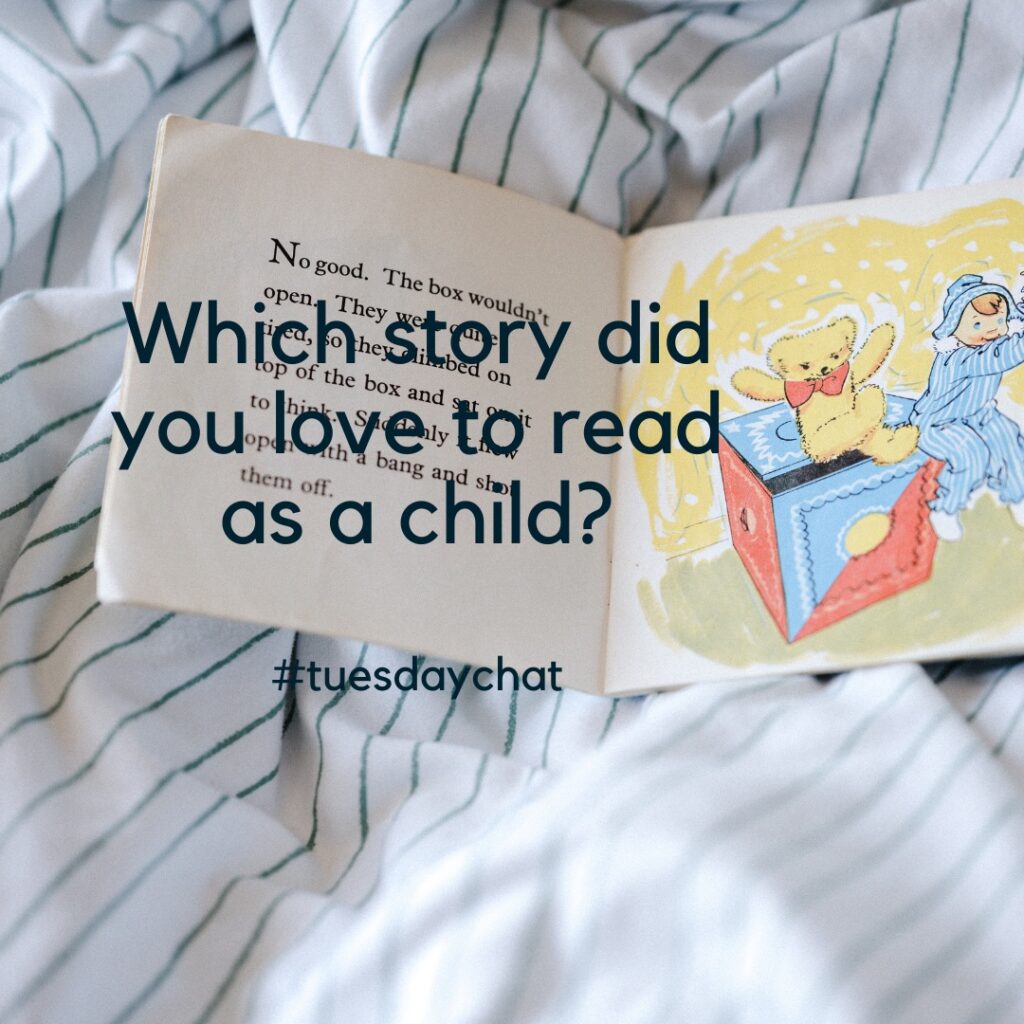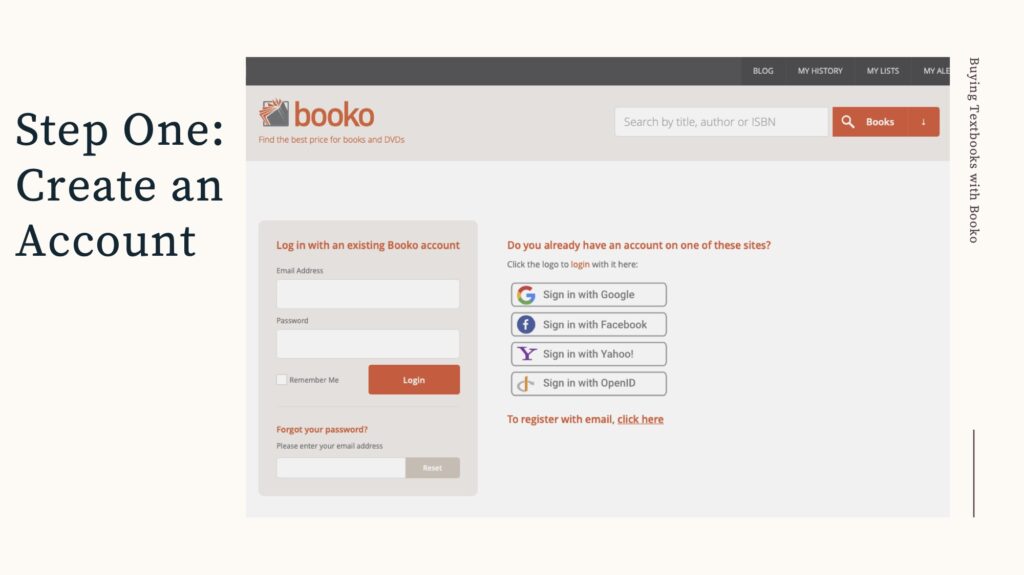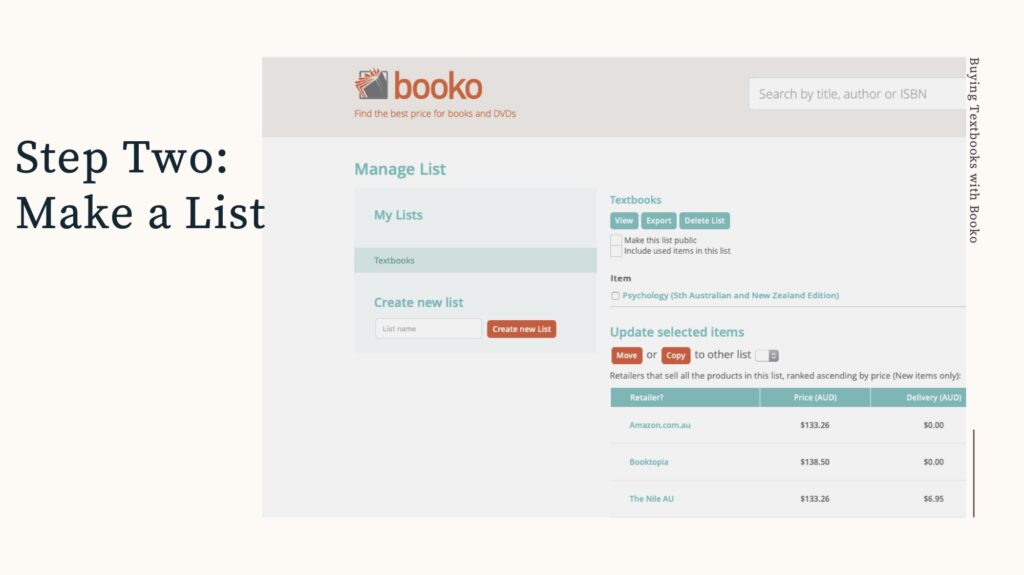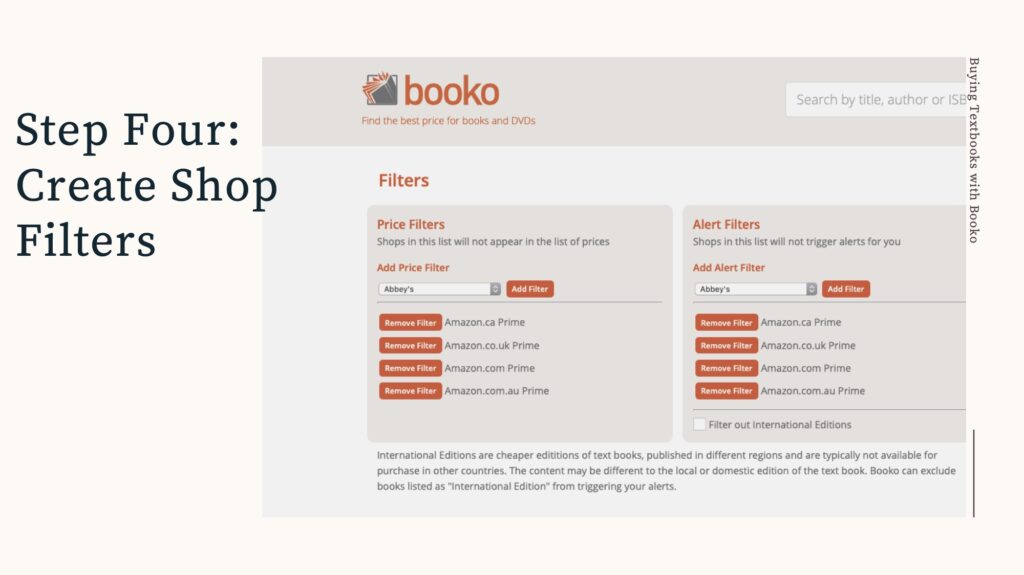The illustrations are exciting, the stories are inspiring and the characters are funny. Children’s picture books are a joy to read. Which was your favourite to read as a child?

In this Ted talk Kiran Bir Sethi shows how her school in India teaches kids life’s most valuable lesson “I can.” Watch her students take local issues into their own hands, lead other young people, even educate their parents.
This week school students all over Australia have headed back to the classroom. Buying school exercise books and covering them was one of the joys of our childhood. Another is that satisfying crack of a spine when you open a brand new textbook. Team Booko waved off a few students to school this week, and one thing that never stops surprising us when you start school is the enormous size of the backpack – especially when it is filled with textbooks.
Textbooks have always been a popular purchase via Booko. The beauty of Booko is that textbooks can be sourced either new or second-hand as cheaply as possible. If you have a student in need of some specified textbooks, this blog post is for you! Here are a few of the best ways to use Booko to make sure you can source everything on your child’s reading list as cheaply, and quickly, as possible. And if you happen to know which books will be needed in the following school terms, you can even set alerts now to help you buy at the best price.
Step One: Create an Account
We treat data very seriously at Booko and want to give you ultimate control of all of your data too. Creating an account allows you to make wish lists, set price alerts and view your search history along with deleting said history, and disabling Booko from keeping track of your history altogether. Just so you know, we don’t actually use your history for anything at all; it’s housed just for your entertainment and reading pleasure.
Click on the ‘sign in’ button at the top of the page and follow the prompts to enter your name, email address and password. If you already have an account, welcome back, just pop in your password and proceed to the next step.

Step Two: Make a List
Once you have a Booko account, you can set up lists to keep track of textbooks on your required reading list or lists.
Want to know how much all of the books on your reading list will cost? Booko will take your list, find the shop that sells the whole lot for the best price and calculate shipping for the entire list.
What’s best is you can have multiple lists which is great if you like keeping your subjects and classes seperate. The list feature allows you to check the prices for used books as well as new, if you wish.
To add a textbook to your list, simply search up your book by entering either the ISBN or the title of the book into the search bar and when the search populates click the little orange box ‘Add to a list’. (Please note that searching by ISBN is the best way to ensure you have the edition your teacher wants, and you should always check before finalising the purchase that the edition in your shopping cart is the correct one.)


Step Three: Set Price Alerts
Booko has a price alert feature (which is a super handy set-and-forget tool) that emails you as soon as the price of a book falls below the current price, or a price specified by you.
To set an alert, you need to be logged into your account (because we need to know which email to send the notifications to). Just click the ‘Add an Alert’ button directly below the book’s cover image on the left side of the page. Nominate a price you are happy to pay, type in your email and the Alert is set. Now all you need to do is wait for the Good News email!
The Booko alert function is really handy when you have a little extra time up your sleeve (like buying textbooks for courses next term). You can have multiple alerts on each book too.
You can also specify a separate price alert for new and used books. This function is loved by many of the students that use Booko – because let’s be honest, not all courses ask for a brand new textbook… nor do they need one. Academic textbooks can be breathtakingly expensive – a single title can be over a hundred dollars, so imagine how much your entire reading list will cost! Booko is great for searching for specialist or academic texts. All you need to do is type a book’s ISBN into the main search box (this ensures you are searching for the correct edition) and away you go. Booko can find most books, whether they are e-Books, Reference books, Fiction or Non-Fiction. And since Booko can locate used copies, you may be able to save even more by buying second-hand!
To set a price alert for a textbook, simply search up your book by entering either the ISBN or the title of the book into the search bar and when the search populates click the little orange box ‘Add an alert’.

Once the ‘Add an alert’ button is pressed, a box will appear asking for you to enter a price for a new and a used version of the book. Enter the price you would like to pay for either and click ‘Add’. The alert will be created and and email will be sent to you when the book has been sourced at the prices you have set.

Step Four: Create shop Filters
Have some shops you’re not a fan of? Now you can filter them out of Booko’s price table and remove them from triggering your alerts. Simply edit them at the filters page.

Enjoy!
Children all over the country are preparing to begin the new school year next week and we are all hoping that it will be a year that has far fewer interruptions than the last two years.
Starting school is such an exciting time and while it’s fun to shop for new shoes, pencil cases and lunch boxes, there is always a little trepidation at the thought of a new routine, new friends to make and new teachers to meet.
We have found six wonderful books that all aim to help the smallest students have a smooth start to their schooling.
The Wild Guide to Starting School by Laura and Philip Bunting
The familiar and much loved animals from previous Bunting tales—Mopoke, Kookaburra, Liarbird, Koala, Quokka, and a few new friends—guide you from starting the day just right (mmm, GumFlakes) to first day jitters, meeting teachers, making friends, lunch time, home time and all the things in between. It is time to get set for your wildest adventure yet. Follow this simple guide and you’ll learn everything you need to know.
All The Ways to Be Smart by Davina Bell
This book has been out for a few years, and it remains a firm favourite in bookshelves all around the country.
Smart is not just ticks and crosses, smart is building boats from boxes. Painting patterns, wheeling wagons, being mermaids, riding dragons. From the award-winning creators of The Underwater Fancy-dress Parade and Under the Love Umbrella comes this joyful ode to all the unique and wonderful qualities that make children who they are.
Ally-saurus and the first day of school by Richard Torrey
When Ally roars off to her first day at school, she hopes she’ll meet lots of other dinosaur-mad kids in class. Instead, she’s the only one chomping her food with fierce dino teeth and drawing dinosaurs on her nameplate. Even worse, a group of would-be “princesses” snubs her! Will Ally ever make new friends? With its humorous art, appealing heroine and surprise ending, this fun board book celebrates children’s boundless imagination.
You can read more of Ally’s adventures here.
Let’s Get Ready for School by Jane Porter
Starting school can be a great adventure, but it can make you feel a bit nervous too. Let’s Get Ready for School is a perfect book to reassure any new school-starter. Jane Porter answers all of these questions and more in this warm, witty and reassuring book for young children that explores everything they’ll need to know before starting school. Marley, Maya, Theo, Akiko, Ella and Zakir are all getting ready to start school. Why not come along with them and see what it’s like? Illustrated with charming characters by Carolina Rabei, this is the perfect introduction to joining a new class.
Old Friends, New Friends by Andrew Daddo
What do you do when none of your old friends are in your new class? From the team who brought you First Day and When I Grow Up comes an empowering and relatable picture book about making friends and being yourself.
Hello World by Kelly Corrigan
From New York Times bestselling author Kelly Corrigan comes a book that celebrates the people in our lives and the meaningful connections we make that come from asking each other questions. Hello World! is the perfect reminder that the journeys we take through life are all about the people we will meet along the way, people who will make us smarter, stronger, and more amazing than we ever thought possible. With her trademark inspirational wisdom, Kelly Corrigan writes the perfect book for anyone about to embark on a new adventure.
Enjoy!
How many times do you stop yourself and question why you think like you do? The most common response is ‘hardly ever’. It’s usually not until someone challenges us directly on why we think, or act, like we do that we actually stop to give it some thought. In our household our children are developing their own critical thinking skills and it is them that question us on the logic behind our thoughts. There are so many books on the market that explore logic, mindsets, and reasoning so we thought we’d share six of the newest titles on the market.
The Critical Thinking Toolkit by Galen Foresman
Okay, so this one is a textbook, but boy is it a good one. The Critical Thinking Toolkit is a comprehensive compendium that equips readers with the essential knowledge and methods for clear, analytical, logical thinking and critique in a range of scholarly contexts and everyday situations. It takes an expansive approach to critical thinking by exploring concepts from other disciplines, including evidence and justification from philosophy, cognitive biases and errors from psychology, race and gender from sociology and political science, and tropes and symbols from rhetoric Written in an accessible way, this book leads readers through terrain too often cluttered with jargon Ideal for beginning to advanced students, as well as general readers, looking for a sophisticated yet accessible introduction to critical thinking.
The Art of Logic by Eugenia Cheng
Emotions are powerful. In newspaper headlines and on social media, they have become the primary way of understanding the world. But strong feelings make it more difficult to see the reality behind the rhetoric. In The Art of Logic, Eugenia Cheng shows how mathematical logic can help us see things more clearly and know when politicians and companies are trying to mislead us. First Cheng explains how to use black-and-white logic to illuminate the world around us, giving us new insight into thorny political questions like public healthcare, Black Lives Matter and Brexit. Then she explains how logic and emotions, used side-by-side, can help us not only to be more rational individuals, but also to live more thoughtfully. Filled with useful real-life examples of logic and illogic at work The Art of Logic is an essential guide to decoding modern life.
Livewired by David Eagleman
How can a blind person learn to see with her tongue or a deaf person learn to hear with his skin? What does a baby born without a nose tell us about our sensory machinery? Might we someday control a robot with our thoughts? And what does any of this have to do with why we dream? The answers to these questions are not right in front of our eyes; they’re right behind our eyes. This book is not simply about what the brain is, but what it does. Covering decades of research to the present day, Livewired also presents new findings from Eagleman’s own research, including new discoveries in synaesthesia, dreaming and wearable neurotech devices that revolutionise how we think about the senses.
The Miniature Guide To Critical Thinking Through Concepts and Tools by Richard Paul and Linda Elder
Sometimes you just need a mini-little-book to give you the gist of something rather than a giant textbook. So here’s a gem of a miniature guide that does just that. This miniature guide, which has sold more than half a million copies, and is widely used in teaching and learning for both personal and professional lives. It distills the essence of critical thinking into a 24-page, pocket-sized guide and introduces the interrelated complex of critical thinking concepts and principles implicit in the works of Richard Paul and Linda Elder.
The Beginner’s Guide to Stoicism: Tools for Emotional Resilience and Positivity by Matthew Van Natta
Optimize joy, overcome obstacles-discover the calm of stoicism. Being a stoic means embracing positivity and self-control through the ability to accept the uncertainty of outcomes. With this stoicism guide, the beginner stoic will learn how to take charge of their emotions on the path to sustained happiness and satisfaction.
This easy-to-navigate stoicism guide gives you the emotional tools needed to let go of the things you can’t control and find joy in what you have. Through thought-provoking strategies and exercises, this book helps you find contentment so you can build closer relationships and become an active member of society. This book explores the evolution and history of stoicism and how its principles can help you find peace.
Using Questions To Think by Nathan Dickman
Our ability to think, argue and reason is determined by our ability to question. Questions are a vital component of critical thinking, yet we underestimate the role they play. Using Questions to Think puts questioning back in the spotlight. Naming the parts of questions at the same time as we name parts of thought, this one-of-a-kind introduction allows us to see how questions relate to the definitions of propositions, premises, conclusions, and the validity of arguments. Why is this important? Making the role of questions visible in thinking reasoning and dialogue, allows us to ask better questions, improve our capability to understand an argument, exercise vigilance in the act of questioning, make explicit what you already know implicitly, engage with ideas that contradict our own and see ideas in broader context.
Breathing new life into our current approach to critical thinking, this practical, much-needed textbook moves us away from the traditional focus on formal argument and fallacy identification, combines the Kantian critique of reason with Hans-Georg Gadamer’s hermeneutics and reminds us why thinking can only be understood as an answer to a question.
Enjoy!
In this Ted Talk educator Gene Luen Yang explores the history of comics in education and reveals some unexpected insights about their potential for helping kids learn.